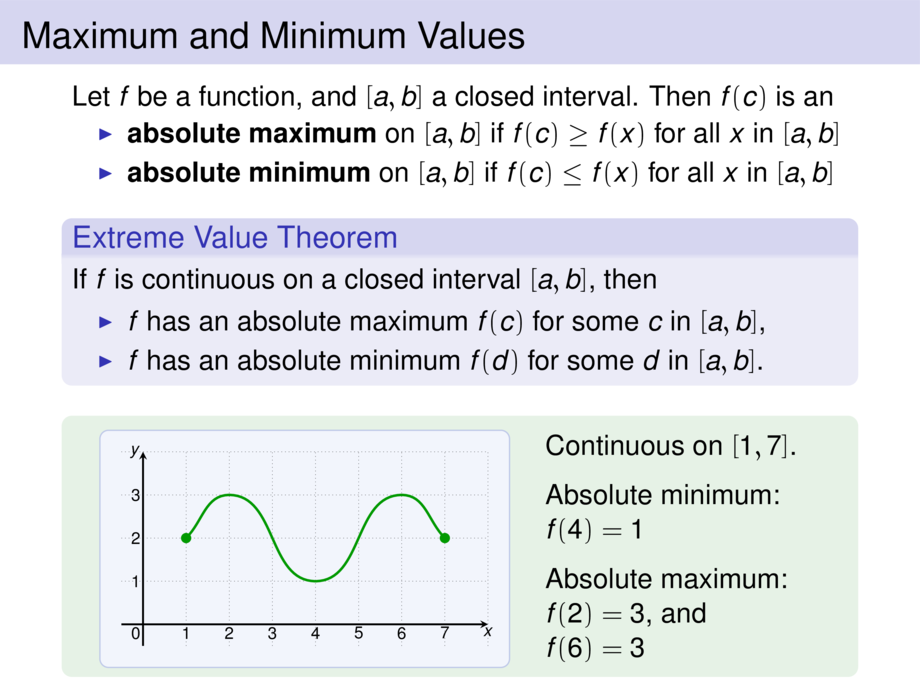



































































































70/209
\begin{frame}
\frametitle{Maximum and Minimum Values}
Let $f$ be a function, and $[a,b]$ a closed interval. Then $f(c)$ is an
\begin{itemize}
\pause
\item \emph{absolute maximum} on $[a,b]$ if $f(c) \ge f(x)$ for all $x$ in~$[a,b]$
\pause
\item \emph{absolute minimum} on $[a,b]$ if $f(c) \le f(x)$ for all $x$ in $[a,b]$
\end{itemize}
\pause\medskip
\extremevalue
\pause\medskip
\begin{exampleblock}{}
\begin{minipage}{.6\textwidth}
\begin{center}
\scalebox{.6}{
\begin{tikzpicture}[default,baseline=1cm]
\diagram{-.5}{8}{-.5}{4}{1}
\diagramannotatey{1,2,3}
\diagramannotatex{1,2,3,4,5,6,7}
\diagramannotatez
\begin{scope}[cgreen,ultra thick]
%\draw plot[smooth,domain=-1:4,samples=200] function{(3*x**4 - 16*x**3 + 18*x**2)/15};
\draw (1,2) to[out=45,in=180] (2,3) to[out=0,in=180] (4,1) to[out=0,in=180] (6,3) to[out=0,in=135] (7,2);
\node[include] at (1,2) {};
\node[include] at (7,2) {};
\end{scope}
\end{tikzpicture}
}
\end{center}
\end{minipage}
\begin{minipage}{.39\textwidth}
\pause
Continuous on $[1,7]$.
\pause\medskip
Absolute minimum:\\\pause
$f(4) = 1$
\pause\medskip
Absolute maximum:\\\pause
$f(2) = 3$, and\\
$f(6) = 3$
\end{minipage}
\end{exampleblock}
\end{frame}

